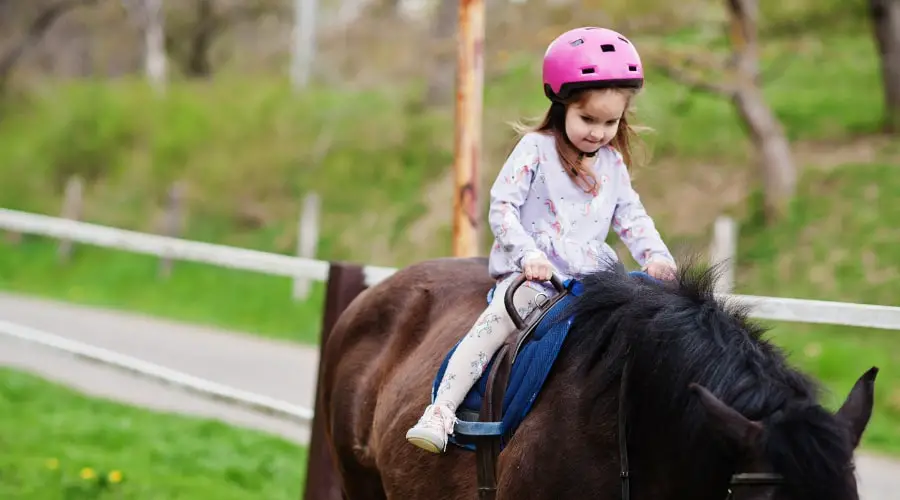The first ride of a bicycle, the first leap on a skateboard, the first climb up a rock wall – these are all iconic childhood moments. But each of these thrilling experiences requires one essential accessory: a helmet. This article specifically focuses on a critical safety device – the kid’s size helmet.

Importance of Kids’ Helmets
Kid’s helmets are essential in preventing severe head injuries. Research indicates that helmets can reduce the risk of severe brain injuries by 88%. Moreover, it’s not just about safety; it’s also about setting a good habit early on. Kids who learn to wear helmets at a young age are more likely to continue this practice into adulthood.
Deciphering Helmet Sizes
Age and Helmet Size
Helmet sizes are often classified by age. However, age categories can only serve as an initial guide as kids’ head sizes can significantly vary.
Head Circumference and Helmet Size
A more accurate way of determining helmet size is by measuring the head circumference. Helmets usually come in small, medium, and large sizes corresponding to specific head circumference ranges.
Types of Kids’ Helmets
Bike Helmets
Bike helmets are specifically designed for bicycling. They are typically lightweight and offer good ventilation.
Skate Helmets
Skate helmets, intended for skateboarding or scootering, usually cover a more significant part of the head and offer better protection against falls from a shorter height.
Multi-Sport Helmets
Multi-sport helmets are versatile options designed for various activities. They’re suitable if your child switches between different sports.
Essential Features of a Kid’s Helmet
Fit and Comfort
Above all, a helmet should fit well and be comfortable to wear. If it’s too tight or loose, it won’t provide sufficient protection.
Safety Standards
Ensure the helmet meets safety standards. In the US, look for a sticker showing it meets the Consumer Product Safety Commission (CPSC) standards.
Adjustability
Most kids’ helmets offer adjustability features, like an adjustable ring on the interior of the helmet, to ensure a snug fit.
Ventilation
Ventilation is essential for comfort, especially in hot weather. Look for helmets with several vents.
How to Measure a Child’s Head for a Helmet
To get the most accurate measurement, you’ll need a soft measuring tape. Position the tape just above your child’s eyebrows and measure the circumference of their head. This number gives you the right helmet size.
Checking the Helmet Fit
The Eyebrow Test
A correctly positioned helmet should sit low on the forehead, about one to two finger widths above the eyebrow.
The Buckle Test
After securing the buckle, ensure that the helmet is snug but not too tight. You should be able to fit one finger between the strap and your child’s chin.
The Movement Test
Ask your child to shake their head “no” and “yes”. The helmet should not wobble or slide during these movements. If it does, adjust the sizing wheel or pads to achieve a better fit.
Maintaining Your Kid’s Helmet
Regularly inspect the helmet for any signs of damage. Clean it with mild soap and water, and store it in a cool, dry place. Never modify a helmet as it could compromise its protective capabilities.

When to Replace a Kid’s Helmet
A helmet should be replaced after any significant impact, even if there’s no visible damage. Otherwise, the general rule is to replace a helmet every 3-5 years due to natural wear and tear and potential degradation of materials.
Popular Kids’ Helmet Brands
Some popular kids’ helmet brands include Bell, Giro, Schwinn, and Nutcase. These brands are known for their quality, comfort, and adherence to safety standards.
Kids’ Helmet Safety Tips
Ensure your child wears the helmet during every ride, no matter how short. Teach them to fasten the chin strap properly, and to always check the fit before setting off.
Frequently Asked Questions
1. How tight should my child’s helmet be?
It should be snug but not uncomfortably tight. You should be able to fit one finger between the strap and your child’s chin.
2. How often should I replace my child’s helmet?
Replace the helmet after any significant impact or every 3-5 years due to natural wear and tear.
3. What should I look for when buying a kid’s helmet?
Look for a proper fit, comfort, adherence to safety standards, adjustability, and adequate ventilation.
4. Can my child wear a hat under their helmet?
It’s generally not advised as it can affect the helmet’s fit and its ability to protect the head during impact.
5. Do all kids’ helmets meet safety standards?
Not necessarily. Always look for a sticker showing the helmet meets relevant safety standards, like CPSC in the US.
Conclusion
Choosing the right kid’s size helmet is essential for your child’s safety during their cycling or skating adventures. Remember, helmet sizes aren’t one-size-fits-all, and finding the right fit is crucial. Encourage helmet use from a young age to foster this valuable habit.
Helmetslab is a website that focuses on providing in-depth reviews and information about different types of helmets, including motorcycle helmets and others helmets. I am writing a post with proper research on the info that helps helmet users.
